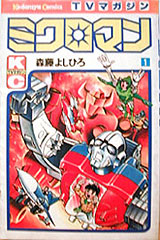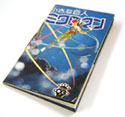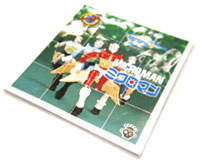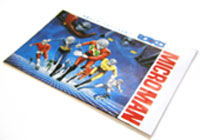|
Classic Microman Takara Microman Series 1974-1984 |
Microman |
|||||
|
Microman Series 1974 Microman Zone
1975 Project Victory
1976 The line finally came into its own during the third year with new figures and the classic Microman Transfer Fortress.
1977 Command 1978 Takara tried new design and direction for the series with the released of Hoodman and Arden.
1979 Rescue Team
1980 Punch & Blizzard Man
New Microman Series
1981 New Microman
1982 Micro Robot
1983 Micro Change
1984 Transformers |
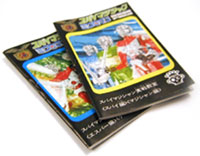 |
Microman toys were first released in 1974 by a Japanese toy company TAKARA as a smaller 10cm version of their popular 8" & 12" fully articulated doll line - the Henshin Cyborg which was debuted in 1972. Takara's Henshin (transforming) Cyborg was actually a spin off from Takara Combat Joe line, which interestingly was a licensed product from another popular well known dolls for boys - the GI Joe. Henshin Cyborg was Combat Joe body molded in clear plastic to expose the gleaming inner cybernetic implants and the "atomic engine". (This was mainly the reason for the clear plastic body, chrome head and chest plate on the first series Microman figures.) The original marketing concept was to make Microman a miniature version of the Henshin Cyborg so this way variety of play-sets and vehicles could be produced for them at reasonable price, since the cost to design and produced vehicles and play-sets for the 12" dolls was very prohibitive not to mention would not be very practical for Japanese market where living spaces were always at a premium and parents were never too keen on large size toys that take up a lot of rooms. |
Microman Story? Unlike most other Japanese toys lines, Microman series was not based on a particular TV show or anime. The story for the line at first was mainly provided by the mini-size "catarog" that came with the toys. Microman "catarog" became the source of information for kids and many spend hours looking at all the Microman toys and read the story in these tiny micro catalogs. It was not until 1976 that Takara commissioned comic serial for the line that ran in "TV Magazine" (a Japanese comic magazine). Microman comic (manga), drawn and written by the late Mr. Moritou, became very popular with kids and Microman toys became one of the most successful toy line for Takara. |
|||
|
The first series Microman, Microman Zone, included four Microman figures and several vehicles in kit form that must be assembled. Microman Zone proved to be popular and by its second year Microman line began to take on its own identity and separated itself from the influence of the Henshin Cyborg line. The bare feet were soon replaced with cybernetic looking feet. And several new Microman types were released that had very little resemblance to the original Henshin Cyborg. Microman popularity was, of course, due to their size. Takara, long before Kenner Star Wars line, pioneered the concept of small plastic action-figures. Also unlike other toys line at the time, Microman figures were the "actual" size of the real thing. Microman figures were market as a real cyborg being from planet Micro Earth that disguised themselves as toys. Kids not only played with Microman figures but they became part of Microman world. Another reason for Microman popularity was the interchangeable concept. Because all Microman toys used 5mm standard for connectors and ports, parts from one toys could be attached to another toys to form brand new toys. |
|
|||||
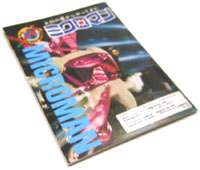 |
The original Microman line ran from 1974 up to 1980, which was a testament to the popularity of the series. By 1980 however, TAKARA faced with a dilemma. Most of their original customers were now much older and no longer interested in childish toys, however the younger generation was unable to understand the line since they did not follow it from the beginning. Also by this time the line was extremely "aged". (To be fair, six years was a very long time for any toys line especially in the market whose average life was usually just one or two years.) In 1981, Takara decided to "reset" the line and re-introduced the toys to the new generation under the name "New Microman" to separate it from the old series. The New Microman shifted the emphasis from interchangeable to self-transformation (vehicles that can turned into robots or weapons) and "combiner" transformation (whereby several smaller robots or vehicles would form one large robots). |
|||||
| In 1983, TAKARA introduced the latest addition to Microman line - the Micro Change series. Micro Change took the concept of self-transformation to a new height. The toys were no longer just some fictional vehicles that "changed" into robots they were now ordinary everyday objects like microscope, cassette player or even a gun that could "transformed" into a robot. By 1984, interestingly, Microman toy came to a full circle. Hasbro, the licensed owner of GI JOE doll, decided to license part of Microman Micro Change series and Diaclone (an offshoot of Microman toy line) from TAKARA. Hasbro marketed these two group of toys together under the Transformers banner. Transformers became an instant hit in the US. Seeing Hasbro success, TAKARA decided to re-import Transformers concept back to Japan in 1985 and there the line also enjoyed immense success. This was what Takara had been looking for during the last few years since the decline of Microman series, at last, they finally found a new line that could replaced their aging ten years old sci-fi series. It was quite ironic that Hasbro, the company that help gave birth to Microman, would be instrumental in ending it. While legacy of Microman would continued on in the form of the Transformers, it would be over ten years before Microman would again be re-introduced, but that story would be for another section... |
|
|||||
